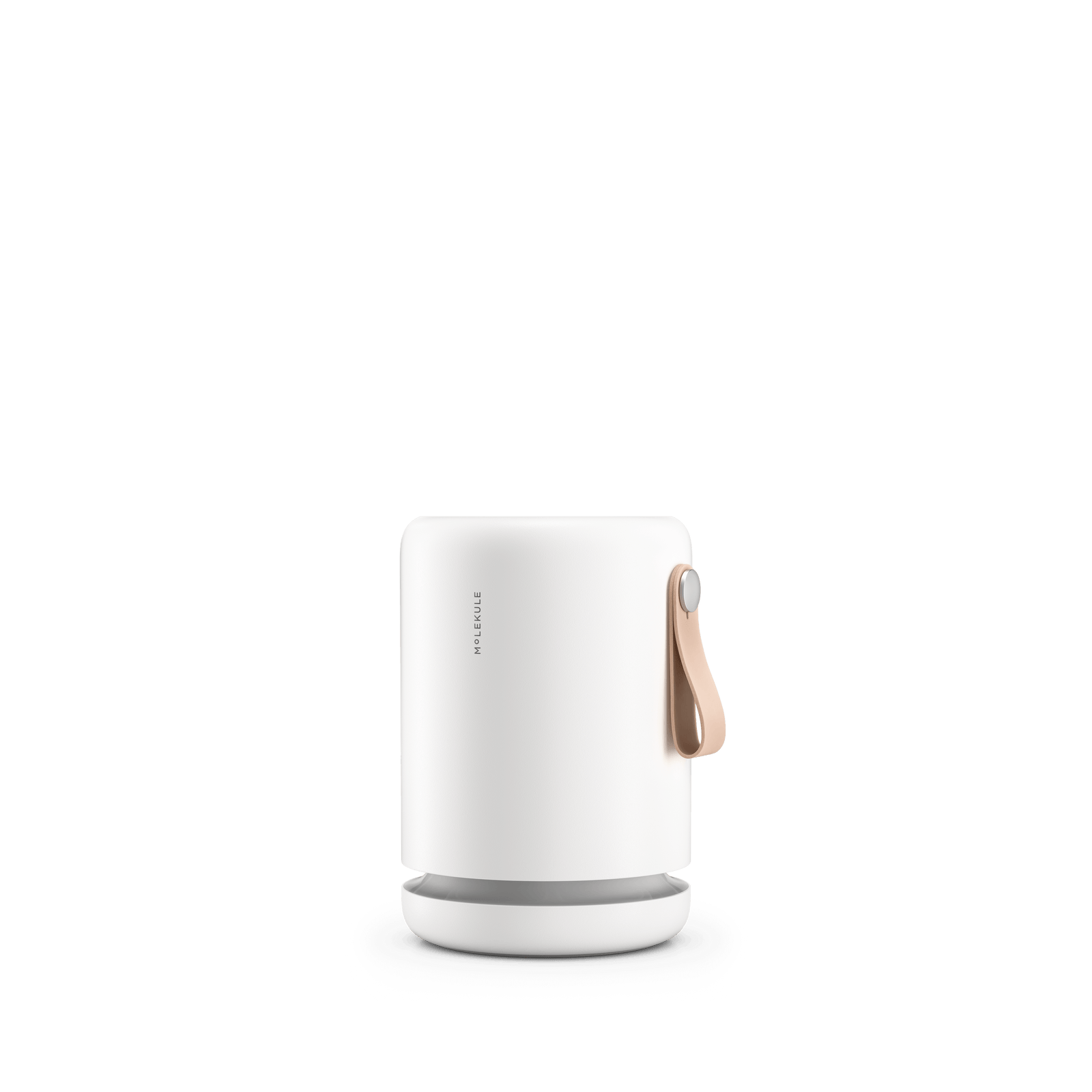Himalayan pink salt has quickly risen in popularity due to its alleged healing properties and its unique aesthetic appeal. Whether you are buying spices from the grocery store, booking a spa treatment or shopping for home decor, you will probably come across the pink-orange salt. One of the most common uses of Himalayan pink salt is in table lamps that are often recommended for their alleged healing properties.
These lamps are believed to help with indoor air pollution among other health benefits. As indoor air experts, we decided to take a closer look. Is it possible that Himalayan pink salt lamps can help provide these types of benefits and to what extent? Is there scientific evidence to back up the lofty manufacturer and consumer claims? Learn more about the buzz surrounding salt lamps so that you can decide for yourself whether they live up to the hype.
What are salt lamps?
Himalayan pink salt lamps are a popular home decor choice because of their soft light, pink color and unique shape. They are also commonly used in spas and yoga studios to help cultivate a calming atmosphere.
Salt lamp manufacturers tote the myriad benefits of the mineral, ranging from air purification to treating asthma and depression. However, these claims are not coming solely from people with profits at stake. Consumers across the country swear by the healing benefits of these lamps as well.
What is Himalayan salt?
Himalayan pink salt is the term used to describe rock salt that has been mined from the Khewra Salt Mine in Pakistan, near the Himalayas. The salt can be found in larger crystal chunks, such as those used for salt lamps, or in smaller pieces used in salt grinders.
The salt gets its distinctive pink-orange color from trace minerals such as magnesium, calcium and potassium. Some people say that these trace elements can provide a variety of health benefits, both when ingested and when used as a lamp. However, despite these claims, Himalayan salt is very similar nutritionally to white table salt.
How are salt lamps made?
There are two main types of salt lamps, both made from salt rocks mined in Pakistan near the Himalayas. One consists of a large chunk of pink salt crystal that has been hollowed out to make space for a light bulb. The other is a bowl made of wire, metal or even Himalayan pink salt filled with slightly smaller pink salt rocks with a light bulb placed underneath the salt crystals. When you turn the lamp on, the light shines through and between the salt crystals.
Potential benefits of salt lamps
Manufacturers claim that salt lamps can provide a variety of health benefits by releasing negatively-charged ions into the air. These negatively charged particles are said to do wonders for a person’s health by increasing blood flow, improving a person’s mood, increasing energy levels and providing relief from the symptoms of seasonal affective disorder (SAD).
Salt lamps are also said to filter the air in your home, trapping airborne pollutants in the lamp’s surface. This claim leads to the theory that salt lamps may improve breathing and sleep, as well as provide relief from allergies and asthma.
Aesthetic qualities
Potential health benefits aside, salt lamps can be an interesting, unique way to decorate your home. The calming pink light can provide an atmosphere different than most table lamps and the pink salt crystal has the potential to match a variety of decor styles. Many people prefer to use salt lamps as an evening light source, to help transition away from the bright lights of the daytime and relax before bed.
Salt lamps and indoor air quality
Himalayan pink salt lamps are thought to purify the air because of their hygroscopic properties. This means that the salt attracts and traps water molecules from the air. The theory is that any airborne pollutants, such as dust, smoke and pollen, present in the water molecules will be trapped on the surface of the salt lamp.
However, salt quickly becomes saturated with water molecules and stops absorbing water from the air. It is possible for intense heat to dry out the salt and enable it to absorb more water, but there is no scientific evidence to support that salt lamps get hot enough to absorb an effective amount of water molecules from the air.
Salt lamps as ionizers: does chemistry support the claims?
Let us first consider this: salt molecules are a combination of sodium and chlorine. When combined, the positive and negative charges of the individual elements cancel each other out and create a stable bond.
Salt can be separated into its base elements—sodium and chlorine—when mixed with water. However, when the salty water evaporates, only the water molecules turn into vapor and the stable salt crystals are left behind.
Heating salt to a point where it changes into a vapor would be extremely unsafe, as the lamp would need to reach temperatures higher than 2,500° F (over 1,400° C). Additionally, heating salt to the point that it chemically decomposes, or separates into its individual charged ions, would release the toxic gases hydrochloric acid and disodium oxide.
Answers in scientific literature
While there has not been much research done on the specific effects of salt lamps on personal health and wellbeing, we can still look to scientific literature to assess individual claims made by salt lamp promoters.
Positive and negative air ions
Scientists have studied the psychological and biological effects of positive and negative ions in the air for over 80 years. However, there seems to be no consensus as to whether these ions can actually influence a person’s physical and mental health. Currently, there is no consistent data to support the effects of air ions (either positive or negative) on sleep, relaxation, anxiety or mood (Perez, et. al, 2013).
Some say that positive ion buildup from electrical appliances can negatively affect a person’s health and mood. However, researchers doubt that ions have the potential to affect respiratory or other biological systems. There is currently no evidence to support the claimed benefits of negatively-charged ions for those suffering from allergy or asthma symptoms (Alexander, et. al, 2013).
Light therapy
While the potential release of negative ions may not be a way to treat seasonal affective disorder, is it possible that the pink light of salt lamps can have a positive effect on mental health?
Light therapy including bright light treatment and dawn simulation has proven helpful to decrease the severity of SAD symptoms. Bright light treatment alone was found to be effective against nonseasonal depression, with benefits comparable to antidepressant pharmacotherapy studies (Golden, et. al, 2005). However, the light provided by salt lamps is not similar to the light used in the study.
The soft, calming pink light emitted by salt lamps may be more helpful in decreasing nighttime exposure to blue light, such as the light you find in your cell phone, computer or tablet. Blue light may reduce the quality of your sleep as well as your cognitive performance the following morning (Hatori, et. al, 2017). At nighttime, the pink glow from a salt lamp may be better on your eyes than other types of artificial light.
Air quality truths
Chronic exposure to pollutants in the air such as dust, pet dander or cigarette smoke can have a negative effect on your overall health. While salt lamps may not be an effective way to purify the air inside your home, there are proven methods to increase your indoor air quality. These include:
- Increasing the ventilation in your home, especially during activities that can produce high levels of contaminants, such as cooking, painting or lighting incense
- Cleaning regularly to reduce pollen, dust and pet dander
- Avoiding cleaning products and other substances that contain high levels of volatile organic compounds (VOCs)
- Cleaning your HVAC system regularly
- Using an air purifier that is scientifically-proven to remove airborne pollutants from your home
Though scientific studies do not support the alleged benefits of Himalayan pink salt lamps, the lamps can still add decorative value to your home. Their aesthetic benefits, including the soft pink light that they create, can be enjoyed whether or not the lamp is purifying your air.












